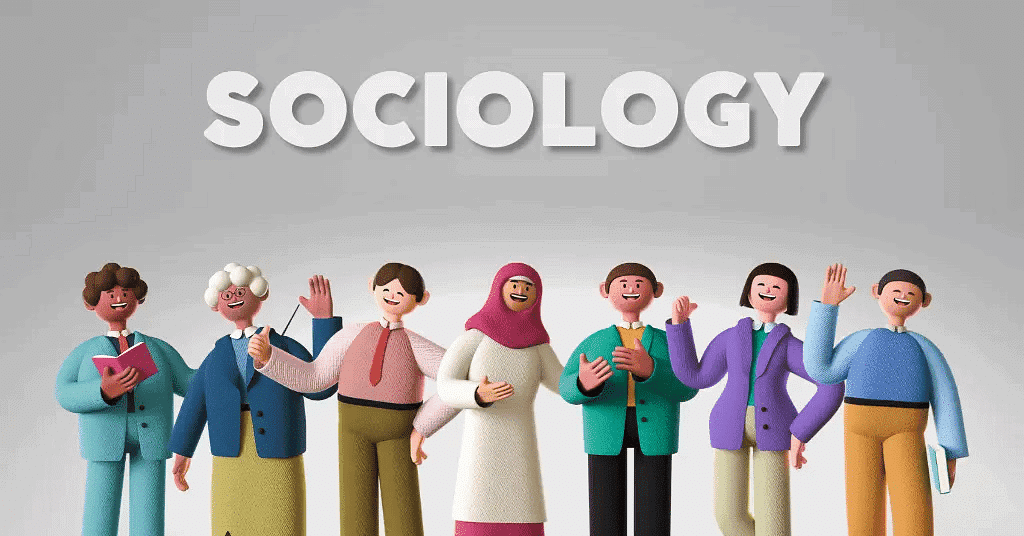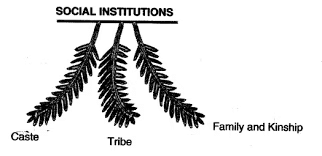UPSC Exam > UPSC Notes > Old & New NCERTs for IAS Preparation (Must Read) > NCERT Summary: Introducing Indian Society (Class 12)
NCERT Summary: Introducing Indian Society (Class 12) | Old & New NCERTs for IAS Preparation (Must Read) - UPSC PDF Download
Introduction

Unique Nature of Sociology
- Sociology is unlike any other subject because everyone already knows something about society.
- Other subjects are taught explicitly, whereas knowledge about society is acquired naturally or automatically.
- Even young children understand social relationships, unlike subjects like History, Geography, Psychology, or Economics.
- Eighteen-year-olds already have substantial informal knowledge about society.
Advantages of Prior Knowledge
- Students are generally not afraid of Sociology.
- Sociology seems approachable because of existing familiarity.
Disadvantages of Prior Knowledge
- Learning Sociology requires “unlearning” existing common sense.
- Prior knowledge is shaped by our social group and environment.
- Common sense is partial – both incomplete and biased.
- Our views are tilted towards our social group's viewpoints and interests.
Self-Reflexivity in Sociology
- Sociology teaches ‘self-reflexivity’ – viewing oneself ‘from the outside’.
- Self-reflexivity involves critical self-inspection.
Social Mapping

- A social map locates individuals based on identities like age, regional or linguistic community, economic class, religious community, caste, or tribe.
- These identities place individuals within a web of social relationships.
- Sociology explains the types of groups in society, their relationships to each other, and what this means for your own life.
Connecting Personal Troubles and Social Issues
- Sociology maps links between “personal troubles” and “social issues” (C. Wright Mills).
- Personal troubles are individual concerns, while social issues affect large groups.
Purpose of the Book
- Introduces Indian society from a sociological perspective.
- Highlights the processes shaping Indian society, moving beyond common sense views.
Question for NCERT Summary: Introducing Indian Society (Class 12)Try yourself: What does sociology teach with regards to viewing oneself?View Solution
A Preview of this Book
Introduction to Indian Society
- First textbook introduces the basic structure of Indian society.
- Second textbook focuses on social change and development in India.
Demographic Structure (Chapter 2)
- India is the second most populous country and is projected to overtake China.
- Sociologists and demographers study population aspects that are socially significant.
- Questions addressed include whether the population is an obstacle or aids development.
Institutions of Caste, Tribe, and Family (Chapter 3)

- Caste: Unique to the Indian subcontinent, has attracted scholarly attention. Examines how caste has changed over centuries and its current meaning.
- Tribe: Explores the concept, types of communities defined as tribes, and how they define themselves in contemporary India.
- Family: Examines the changes in diverse family forms in India due to rapid social change.
Market and Socio-Cultural Dimensions (Chapter 4)
- Market: A powerful institution driving change throughout history.
- Focuses on economic changes brought by colonialism and developmental policies.
- Examines the evolution of different kinds of markets in India and their impacts.
Inequality and Exclusion (Chapter 5)
- Examines inequality and exclusion in the context of caste, tribe, gender, and disability.
- Caste: Analyzes state and oppressed caste efforts to reform or abolish the caste system, and the success of movements resisting caste exclusion.
- Tribe: Looks at tribal movements, their problems, and the reassertion of tribal identities.
- Gender: Addresses the impact of the women’s movement on social institutions.
- Disabled: Investigates society's responsiveness to the needs of the disabled.
Challenges of Diversity (Chapter 6)
- Explores the immense diversity of Indian society and its challenges.
- Encourages stepping outside familiar thinking about unity in diversity.
- Examines India's strengths and weaknesses in managing diversity.
- Discusses how young adults can address communal conflict, regional or linguistic chauvinism, and casteism.
- Stresses the importance of minorities feeling secure for the nation's future.
Practical Component (Chapter 7)
- Provides suggestions for practical activities related to the course.
- Emphasizes that the practical component can be interesting and enjoyable.
Question for NCERT Summary: Introducing Indian Society (Class 12)Try yourself: Which social institution is unique to the Indian subcontinent and has attracted scholarly attention over the centuries?View Solution
The document NCERT Summary: Introducing Indian Society (Class 12) | Old & New NCERTs for IAS Preparation (Must Read) - UPSC is a part of the UPSC Course Old & New NCERTs for IAS Preparation (Must Read).
All you need of UPSC at this link: UPSC
|
3 videos|729 docs|527 tests
|
FAQs on NCERT Summary: Introducing Indian Society (Class 12) - Old & New NCERTs for IAS Preparation (Must Read) - UPSC
| 1. What are the key features of Indian society as discussed in the NCERT Class 12 book? |  |
Ans.The key features of Indian society include its diversity in culture, languages, religions, and traditions. It also highlights the importance of social structures such as family, caste, and community, and how these influence individual behavior and societal norms.
| 2. How does the NCERT Class 12 book explain the concept of social stratification in India? |  |
Ans.The concept of social stratification in India is explained through the caste system, class differences, and economic disparities. The book discusses how these stratifications affect access to resources, opportunities, and social mobility, and the implications for social justice.
| 3. What role do social institutions play in shaping Indian society according to the NCERT textbook? |  |
Ans.Social institutions such as family, education, religion, and the economy play a crucial role in shaping Indian society. They provide structure, stability, and a framework for social interactions, as well as influencing values, norms, and cultural practices.
| 4. How does the NCERT Class 12 book address the issue of gender roles in Indian society? |  |
Ans.The NCERT Class 12 book addresses gender roles by discussing traditional expectations of men and women, the impact of patriarchy, and the ongoing struggles for gender equality. It examines how these roles are evolving in contemporary society and the challenges faced by different genders.
| 5. What are some major social changes in India highlighted in the NCERT Class 12 book? |  |
Ans.Major social changes highlighted include urbanization, globalization, the impact of technology, and shifts in family structures. These changes have contributed to altering social norms, increasing individualism, and challenging traditional practices, leading to both positive and negative consequences for society.
Related Searches





















